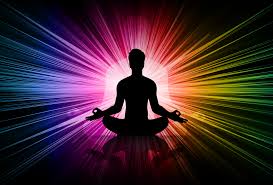What Color Is My Aura: Decoding The Vibrant Hues Of Your Aura
Have you ever felt like you radiate certain energy, a vibe that hints at your mood or inner fire? That’s the idea behind the aura, a concept that’s fascinated mystics for ages. Science hasn’t caught up on the glowing bits yet, but the aura’s mystique is undeniable.
In this article let’s dive into the world of auras and explore how you might tap into your own energetic essence.
Techniques to Unveil Your Aura
While the ability to see auras is an innate gift for some, it is a skill that can be cultivated through dedicated practice.
One technique is to gaze softly at a plain white wall, letting your focus blur slightly. Now, look at someone standing in front of it – pay attention to the space around their head and shoulders. With patience and a touch of concentration, you might start to see wisps of color – that’s your first glimpse of their aura!
Another approach is to tune into your inner world. Activities that bring peace and quiet, like acupuncture, massage, or even a deep meditation session, can heighten your awareness. In these moments of stillness, the line between the physical and energetic seems to blur, revealing the beautiful colors that surround you.
For those who crave a more hands-on experience, aura photography offers a captivating snapshot of your energy field. While the science behind it is still up for debate, it can be a fun way to explore the vibrant tapestry of light that might be swirling around you.
What Color Is My Aura: Unveiling the Meanings of Aura Colors
Here’s a look at some of the most common aura colors and their associated qualities:
- Red: Associated with grounding energy, passion, and vitality. A strong red aura might indicate someone who is assertive and action-oriented.
- Orange: Represents creativity, enthusiasm, and sociability. A prominent orange aura could suggest a person who is optimistic and full of life.
- Yellow: Linked to intellect, mental clarity, and happiness. A dominant yellow aura might signify someone who is analytical and has a sunny disposition.
- Green: Represents growth, balance, and healing. A strong green aura could indicate someone who is compassionate and nurturing.
- Blue: Associated with peace, communication, and truth. A prominent blue aura might signify someone who is calm, empathetic, and trustworthy.
- Indigo: Represents intuition, wisdom, and spiritual connection. A dominant indigo aura could suggest someone who is deeply insightful and in touch with their inner world.
- Violet: Associated with transformation, inspiration, and spirituality. A strong violet aura might indicate someone who is highly creative and has a strong connection to the divine.
It’s important to remember that these are just general interpretations. Auras are believed to be multifaceted, with a blend of colors reflecting a person’s unique energy signature.
Practical Applications of Aura Insights
Understanding the profound significance of your aura colors can serve as a powerful tool for self-discovery and personal growth. By recognizing the strengths and challenges associated with your predominant hues, you can cultivate self-awareness and develop strategies to nurture your innate qualities while addressing areas that may require attention.
For example, if your aura is predominantly red, you may benefit from practices that cultivate patience and adaptability, counterbalancing the intensity of your grounded nature. Equally, if your aura is predominantly indigo, you may find solace in activities that encourage self-expression and connection, counterbalancing any tendencies towards introversion or self-doubt.
Plus, aura insights can provide valuable guidance in areas such as career choices, relationships, and personal development. By aligning your pursuits with the unique strengths and inclinations reflected in your aura colors, you can unlock a deeper sense of fulfillment and purpose.
What Color Is My Aura: Frequently Asked Questions
1. Can aura colors be accurately determined through aura photography?
While aura photography can provide a visually compelling representation of one’s energetic field, the accuracy of these techniques is subject to debate. It is important to approach such methods with an open yet discerning mindset, recognizing that they may serve as a starting point for further exploration rather than a definitive assessment.
2. Can aura colors change instantly or do they evolve gradually?
Aura colors are believed to evolve gradually, reflecting the ongoing journey of personal growth and transformation. However, significant life events or profound emotional experiences may catalyze more rapid shifts in one’s aura, reflecting the dynamic nature of our energetic fields.
3. Can individuals have a combination of multiple aura colors?
Absolutely! While some individuals may have a predominant aura color, it is common for various hues to coexist and intermingle, reflecting the multifaceted aspects of our personalities and life experiences.
4. Are certain aura colors considered more desirable or spiritually advanced than others?
Each aura color holds its own unique significance and beauty, reflecting the diverse tapestry of human experiences and potentials. Rather than perceiving certain colors as superior or inferior, it is more beneficial to embrace and nurture the qualities associated with one’s predominant hues while striving for balance and personal growth.
5. Can aura colors be influenced or manipulated?
Some practices, such as meditation, energy healing, and conscious intention, may assist in harmonizing and balancing our energetic fields.

